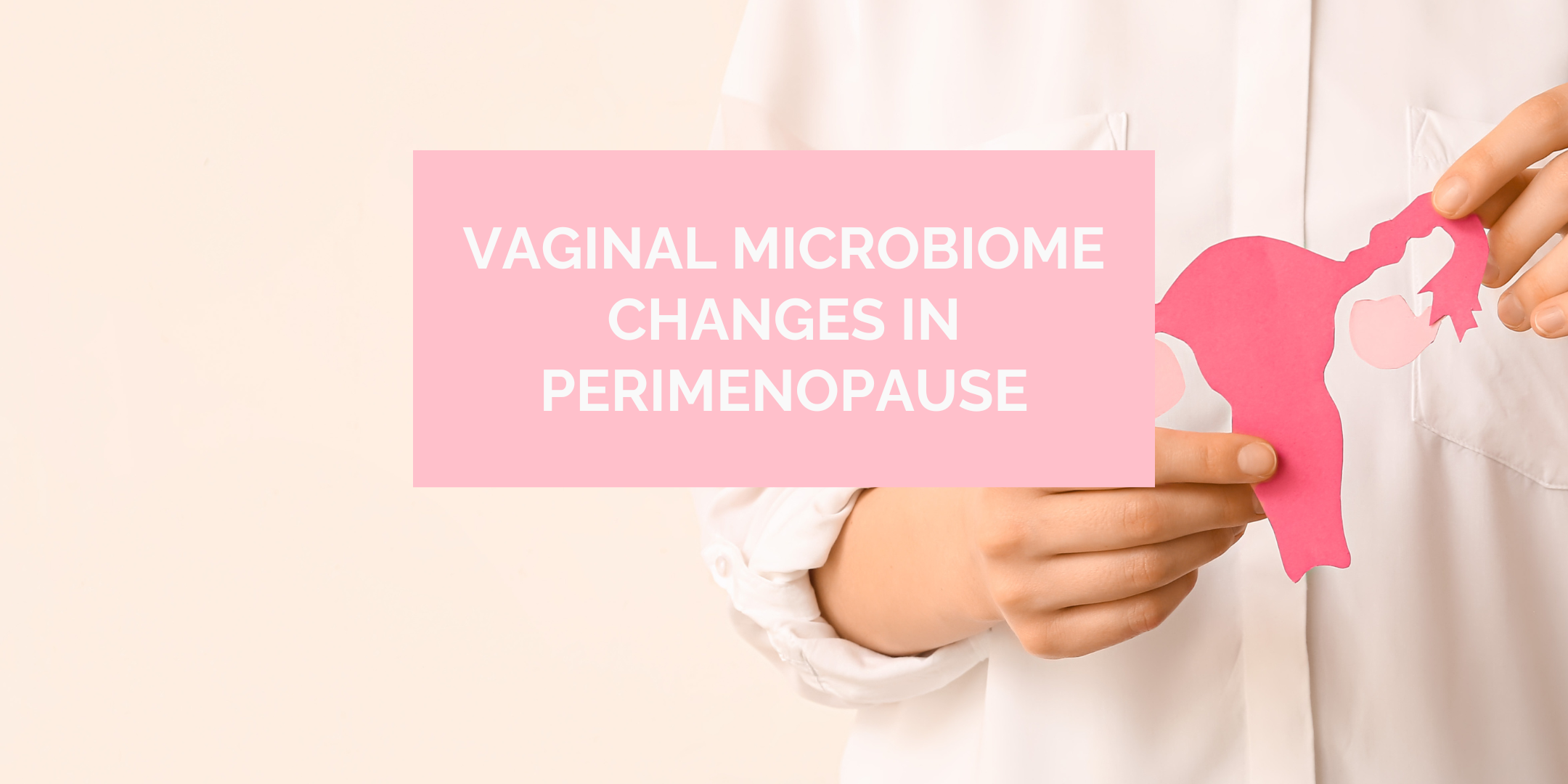The human body is home to trillions of microorganisms that play a key role in maintaining health. Among them, the vaginal microbiome is one of the most remarkable. It is a delicate and complex ecosystem made up of bacteria, fungi, and other microbes that live naturally inside the vagina. This unique microbial community helps protect against infections, supports reproductive health, and maintains the body’s natural balance.
What Is the Vaginal Microbiome?

The vaginal microbiome refers to the collection of microorganisms that inhabit the vaginal environment. These microbes exist in a balanced relationship with the body, providing essential protection and keeping harmful bacteria under control.
Most of the beneficial bacteria in the vaginal microbiome belong to the Lactobacillus family. These bacteria produce lactic acid, which helps maintain an acidic vaginal pH (around 3.5 to 4.5). This acidity is vital because it prevents harmful bacteria, viruses, and yeast from growing and causing infections.
When the balance of these microorganisms is disrupted, it can lead to issues such as bacterial vaginosis, yeast infections, or other imbalances.
Why the Vaginal Microbiome Matters
The vaginal microbiome plays a key role in:
-
Preventing infections: Beneficial bacteria act as a natural barrier, keeping harmful microbes from thriving.
-
Maintaining pH balance: The acidic environment discourages pathogens and supports comfort and health.
-
Supporting fertility: A healthy microbiome helps sperm survive and reach the egg for fertilization.
-
Boosting immune function: The microbiome interacts with the immune system, strengthening the body’s defenses.
When this balance is disturbed—by antibiotics, stress, hormonal changes, or hygiene habits—it can affect overall well-being and reproductive health.
Factors That Influence the Vaginal Microbiome
Several factors can shape or change the composition of the vaginal microbiome throughout a woman’s life. Understanding these can help maintain a healthy balance:
-
Hormonal changes: Estrogen levels influence the growth of Lactobacillus species. During puberty, pregnancy, and menopause, these changes can shift the microbiome’s composition.
-
Antibiotic use: Antibiotics don’t discriminate between good and bad bacteria. Overuse can reduce beneficial bacteria, allowing harmful ones to grow.
-
Sexual activity: Semen, new sexual partners, and certain lubricants can temporarily alter vaginal pH and microbial balance.
-
Menstrual cycle: Blood slightly raises vaginal pH, creating a more favorable environment for certain bacteria.
-
Hygiene practices: Overwashing, douching, or using harsh soaps can strip away protective bacteria.
-
Diet and lifestyle: Nutrient-rich foods and hydration support microbial health, while processed foods and stress can disrupt it.
Signs of an Imbalanced Vaginal Microbiome
When the vaginal microbiome becomes imbalanced—a condition known as dysbiosis—symptoms may appear. These can include:
-
Unusual odor
-
Changes in discharge color or texture
-
Itching or irritation
-
Burning sensation during urination
-
Discomfort during intercourse
If any of these symptoms persist, it’s important to consult a healthcare professional. Treating the imbalance early helps restore comfort and prevent recurring issues.
How to Support a Healthy Vaginal Microbiome
The good news is that the vaginal microbiome can often restore itself naturally with proper care and lifestyle choices. Here are some evidence-based ways to help it thrive:
1. Avoid Harsh Cleansers
The vagina is self-cleaning and doesn’t need perfumed washes or douching. These products can upset the natural pH and remove protective bacteria. Gently wash the external genital area with mild, unscented soap and water only.
2. Wear Breathable Underwear
Cotton underwear allows air circulation and prevents moisture buildup, reducing the risk of infections. Avoid tight or synthetic fabrics that trap heat and moisture.
3. Maintain a Balanced Diet
A nutrient-rich diet supports overall and vaginal health. Include foods rich in fiber, vitamins, and natural probiotics such as yogurt and fermented vegetables. Staying hydrated helps the body flush out toxins and maintain optimal moisture levels.
4. Be Mindful of Antibiotic Use
While antibiotics can be lifesaving, unnecessary use can disrupt healthy bacteria. Only take antibiotics when prescribed, and discuss preventive measures with your doctor.
5. Manage Stress and Sleep Well
Chronic stress affects hormone levels, which can indirectly alter the vaginal microbiome. Regular exercise, meditation, and proper sleep promote both mental and physical balance.
6. Practice Safe Sex
Using protection can reduce the introduction of new bacteria and viruses that might upset the vaginal microbiome. Communication and mutual care are key parts of reproductive health.
The Role of Hormones in the Vaginal Microbiome
Hormones—especially estrogen—play a powerful role in shaping the vaginal environment. Estrogen promotes the growth of Lactobacillus by increasing glycogen in vaginal tissues. Glycogen serves as food for these beneficial bacteria, helping them produce more lactic acid.
During menopause, when estrogen levels drop, Lactobacillus numbers may decrease, leading to higher pH and a greater chance of infections or dryness. Understanding this connection helps explain why hormonal changes often accompany shifts in comfort and health.
Emerging Research on the Vaginal Microbiome
Scientists are learning more about how the vaginal microbiome affects not only reproductive health but also broader aspects of well-being. Recent studies suggest potential links between the vaginal microbiome and pregnancy outcomes, immune responses, and even urinary tract health.
There is growing interest in therapies designed to restore or maintain microbial balance. Natural lifestyle adjustments remain the foundation, but future medical approaches may include microbiome-based treatments that encourage long-term wellness.
Everyday Tips for Vaginal Health
-
Change out of wet clothing quickly after swimming or exercise.
-
Choose menstrual products that allow airflow, such as pads or menstrual cups, depending on comfort.
-
Avoid unnecessary use of feminine sprays or powders.
-
Stay hydrated and maintain regular physical activity
The Future of Vaginal Microbiome Research
The field of microbiome science is rapidly expanding. With advances in DNA sequencing and microbial mapping, researchers are uncovering how the vaginal microbiome interacts with the rest of the body. This knowledge could lead to innovative approaches in preventive care, fertility treatments, and personalized health strategies.
Maintaining a balanced vaginal microbiome is not about eliminating bacteria—it’s about nurturing the right ones. By supporting this natural ecosystem, women can enhance their comfort, confidence, and overall well-being.
A healthy vaginal microbiome is essential for protecting against infections, regulating pH, and supporting reproductive wellness. Simple lifestyle habits—like mindful hygiene, balanced nutrition, and stress management—can make a lasting difference. Taking care of this invisible yet powerful ecosystem is a vital part of self-care and overall health.


